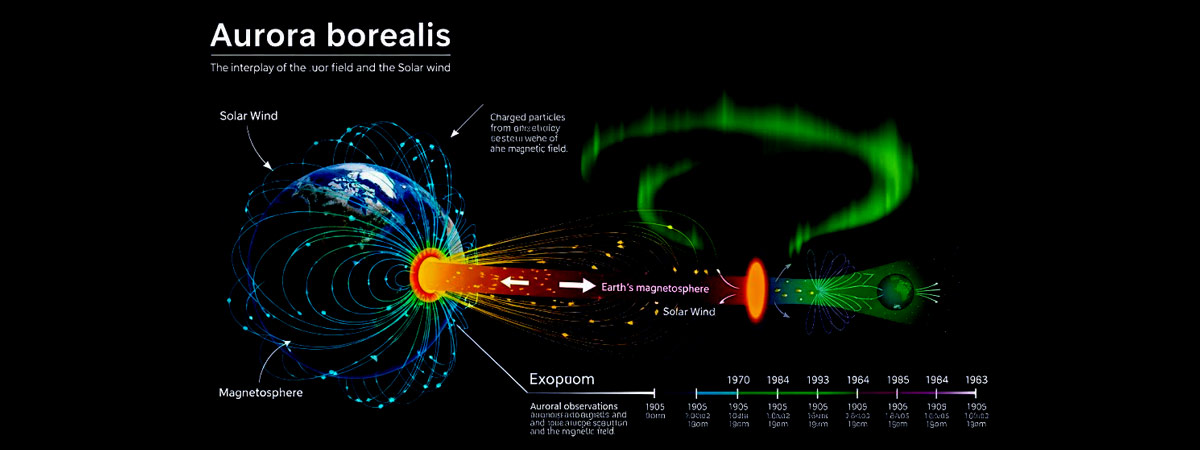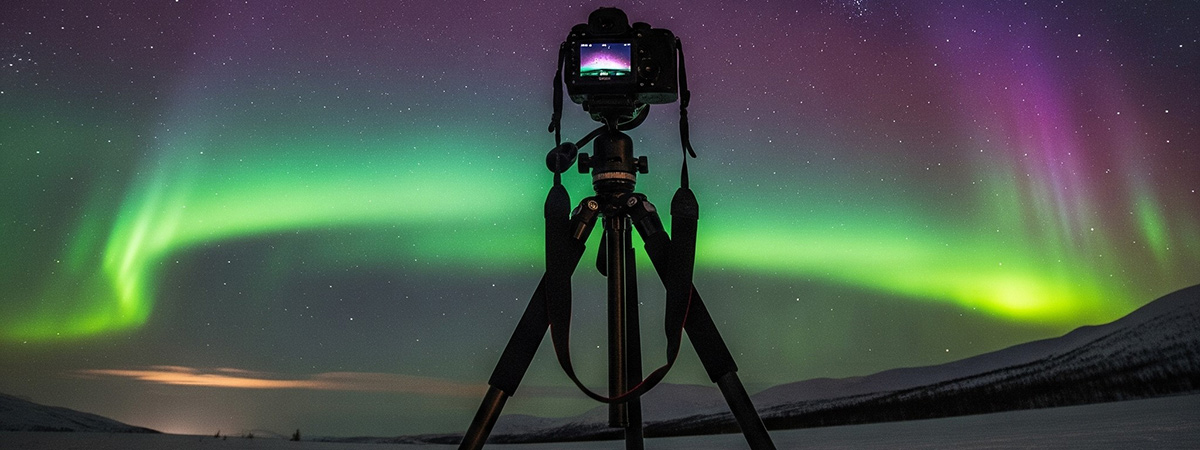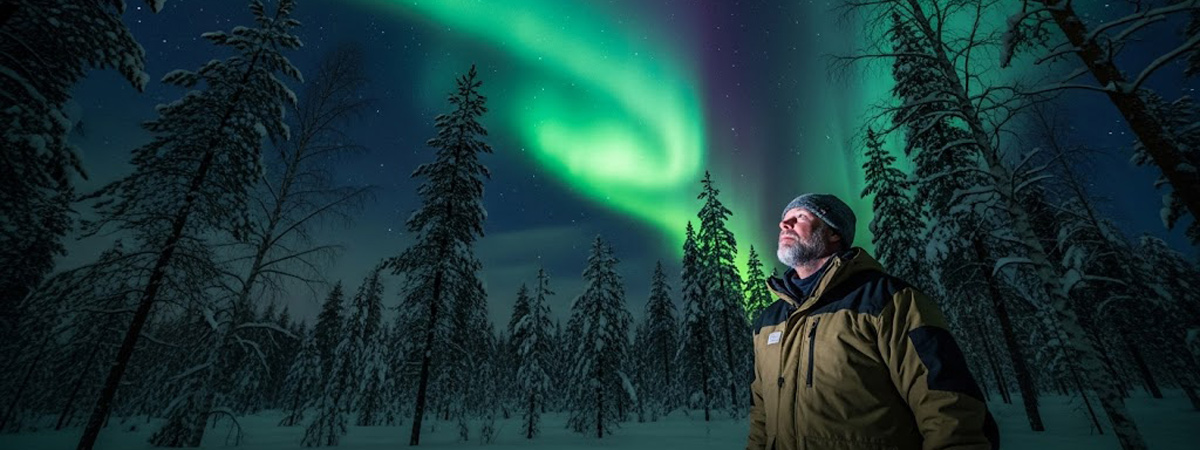The Hunt for the Northern Lights
A Guide to the Magical Spectacle in the Night Sky
The Magical Glow of the Aurora Borealis
The Aurora Borealis, better known as the Northern Lights, is one of the most breathtaking natural spectacles in the world. Seeing the dancing lights in the sky during the dark, clear winter nights of Northern Sweden is an unforgettable experience. The low light pollution around Bettys Hus provides ideal conditions for this.
What are Northern Lights? The Science Explained Simply

Northern Lights occur when electrically charged particles from the sun (solar wind) hit the upper layers of the Earth's atmosphere. Guided by the Earth's magnetic field, these particles collide with gas atoms, which then begin to glow – like a huge, natural fluorescent tube.
Planning Your Northern Lights Hunt
Patience and the right conditions are the keys to success. With the right planning, you increase your chances of seeing this celestial spectacle with your own eyes.
When is the best time of year for Northern Lights?
The season lasts from September to the end of March. During these months, the nights are long and dark enough. The chances are often particularly good around the equinoxes in September/October and February/March.
What is the best time of night?
The Northern Lights can appear at any time during the dark hours, but often with increased activity between 10:00 PM and 2:00 AM. It's worth staying awake and keeping an eye on the sky.
What role does the moon play?
A bright full moon can outshine weaker Northern Lights. The best conditions are on nights around the new moon. However, a glowing moon in the snowy landscape also has its own charm.
What weather conditions do I need?
A clear, cloudless sky is the most important prerequisite. A dense cloud cover makes observation impossible. Therefore, always check the cloud forecast for the night.
Where can I find the best forecasts?
Use apps like "My Aurora Forecast & Alerts" or websites like SpaceWeatherLive.com. They show the KP-index – a value for geomagnetic activity. A KP-index of 3 or higher is a good indicator for our latitudes.
Where are the best viewing spots?
Look for a dark place with a clear view to the north, away from village or street lights. A frozen lake or an open clearing is ideal. Bettys Hus itself offers excellent viewing opportunities due to its location.
Photographing the Northern Lights: A Beginner's Guide

Capturing the magic of the aurora in a photo is easier than you might think. With the right equipment and a few basic settings, anyone can take impressive pictures.
Q&A on Photography
What kind of camera do I need?
A camera with a manual mode (M), where you can set the ISO, aperture, and exposure time yourself, is ideal. Mirrorless or DSLR cameras are best suited.
Which lens is best?
A wide-angle lens (e.g., 14-24mm) with a large maximum aperture (e.g., f/1.8 or f/2.8) to capture as much of the sky and as much light as possible.
Do I need a tripod?
Yes, a sturdy tripod is absolutely essential. Since you will be working with long exposure times, the camera must remain completely still to get sharp, non-blurry images.
What are typical camera settings?
Start with: Manual mode, aperture as wide open as possible (e.g., f/2.8), exposure time between 5 and 15 seconds, ISO value between 1600 and 3200, and manual focus.
How do I focus in the dark?
Autofocus will fail. Switch to manual focus. Use live view, zoom in on a bright star, and turn the focus ring until the star is a tiny, sharp point.
Can I photograph the Northern Lights with my phone?
Yes! Modern smartphones with a good night mode can produce amazing results. Be sure to use a small tripod here as well and, if available, a pro mode in your camera app.
The Experience and Practical Tips

Hunting for the Northern Lights is more than just checking an item off a list. It is a nature experience that requires patience and is rewarded with unforgettable moments.
Q&A on the Experience
What do Northern Lights really look like?
Cameras often see more colors than the human eye. Faint Northern Lights may appear more like a gray cloud to the naked eye. However, during strong activity, the dancing green and sometimes violet curtains are clear and distinct.
How long does a Northern Lights display last?
It varies greatly. Sometimes it's just a brief flicker for a few minutes, other times the lights dance across the sky for hours in several waves.
What colors are there and what do they mean?
The most common green is caused by oxygen atoms at an altitude of about 100-200 km. Red tones are rarer and are caused by oxygen at even higher altitudes. Violet and blue tones are caused by nitrogen atoms.
Can you hear the Northern Lights?
It is not scientifically proven that Northern Lights produce sounds audible to humans. Nevertheless, some observers report a faint crackling or hissing sound on extremely cold, silent nights. Whether real or imagined – the silence of the Arctic night is part of the magic.
What is the most essential clothing?
Warmth! Waiting in cold nights requires the layering principle: thermal underwear (wool), a thick insulation layer (fleece/down), and a windproof outer layer. Especially important are warm, insulated winter boots, a hat, and thick gloves.
Are there guided tours in the region?
Guided Northern Lights tours are often offered in the wider area, especially around the larger tourist centers. These can range from snowshoe hikes to snowmobile safaris. A local search for "Norrskenstur" can be worthwhile.
